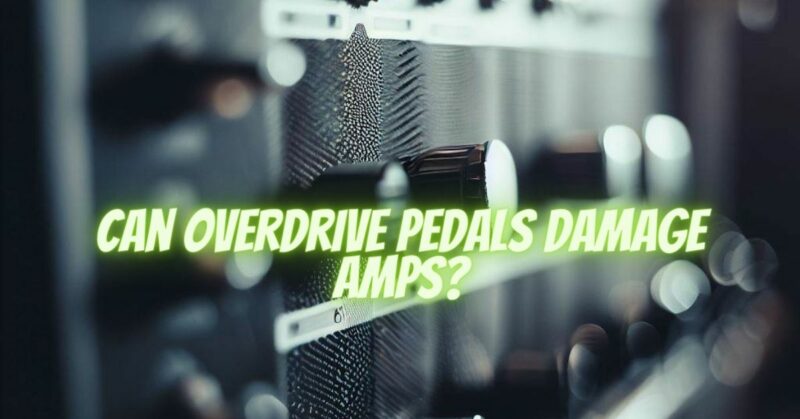Overdrive pedals are widely used by guitarists to shape their tone and achieve various levels of distortion. However, concerns may arise regarding the potential impact of overdrive pedals on the health and longevity of guitar amplifiers. In this article, we will explore the relationship between overdrive pedals and amplifiers, addressing common questions and providing insights on how to use overdrive pedals safely without causing damage to your valuable equipment.
Understanding Signal Levels:
To understand the potential impact of overdrive pedals on amplifiers, it’s essential to grasp the concept of signal levels. Overdrive pedals amplify the signal from your guitar, which is then fed into the input stage of your amplifier. This increased signal level can impact the overall volume, gain, and dynamics of your amplifier’s circuitry.
Safeguarding Your Amp:
- Signal Level Control: One of the primary concerns with overdrive pedals is sending a signal that exceeds the input capacity of your amplifier. This can result in unwanted distortion, clipping, or even damage to the amplifier’s components. To avoid this, it is crucial to carefully adjust the output level of your overdrive pedal. Start with a lower setting and gradually increase it until you achieve the desired tone without pushing the amplifier beyond its limits.
- Input Impedance Matching: Different amplifiers have varying input impedance values, which affect how the signal from your guitar and pedal interacts with the amplifier’s input stage. It is generally advisable to match the output impedance of your overdrive pedal with the input impedance of your amplifier to ensure optimal signal transfer and avoid potential tonal degradation or impedance mismatch issues.
- Power Supply Considerations: Overdrive pedals, like any other effects pedals, require power to operate. It is essential to use a reliable and appropriately rated power supply that meets the pedal’s requirements. Using incorrect or unstable power sources can introduce noise, affect the pedal’s performance, and potentially impact your amplifier as well.
Using Overdrive Pedals Responsibly:
- Quality Pedals: Investing in reputable, well-built overdrive pedals from trusted manufacturers can minimize the risk of damage to your amplifier. High-quality pedals are designed to provide clean, reliable signal amplification and typically incorporate protective measures to safeguard against unwanted voltage spikes or excessive signal levels.
- Monitoring Volume and Gain Levels: Monitoring the overall volume and gain levels is crucial when using overdrive pedals. Pushing the amplifier’s volume or gain controls to their maximum limits while using a high-gain overdrive pedal can strain the amplifier’s circuitry and potentially lead to overheating or component damage. It’s important to strike a balance and exercise caution when adjusting these settings.
- Regular Maintenance and Inspection: Routinely inspecting and maintaining your amplifier can help identify any potential issues before they escalate. Cleaning the input jacks, ensuring proper ventilation, and periodically checking internal components can contribute to the overall health and longevity of your amplifier.
Conclusion:
When used responsibly and with proper consideration, overdrive pedals can enhance your guitar tone without causing damage to your amplifier. By carefully adjusting signal levels, matching input impedances, using reliable power supplies, and monitoring volume and gain settings, you can ensure the safe integration of overdrive pedals into your setup. Remember to invest in quality pedals, prioritize regular maintenance, and trust your ears to find the sweet spot that balances the desired tone with the health and longevity of your amplifier.

